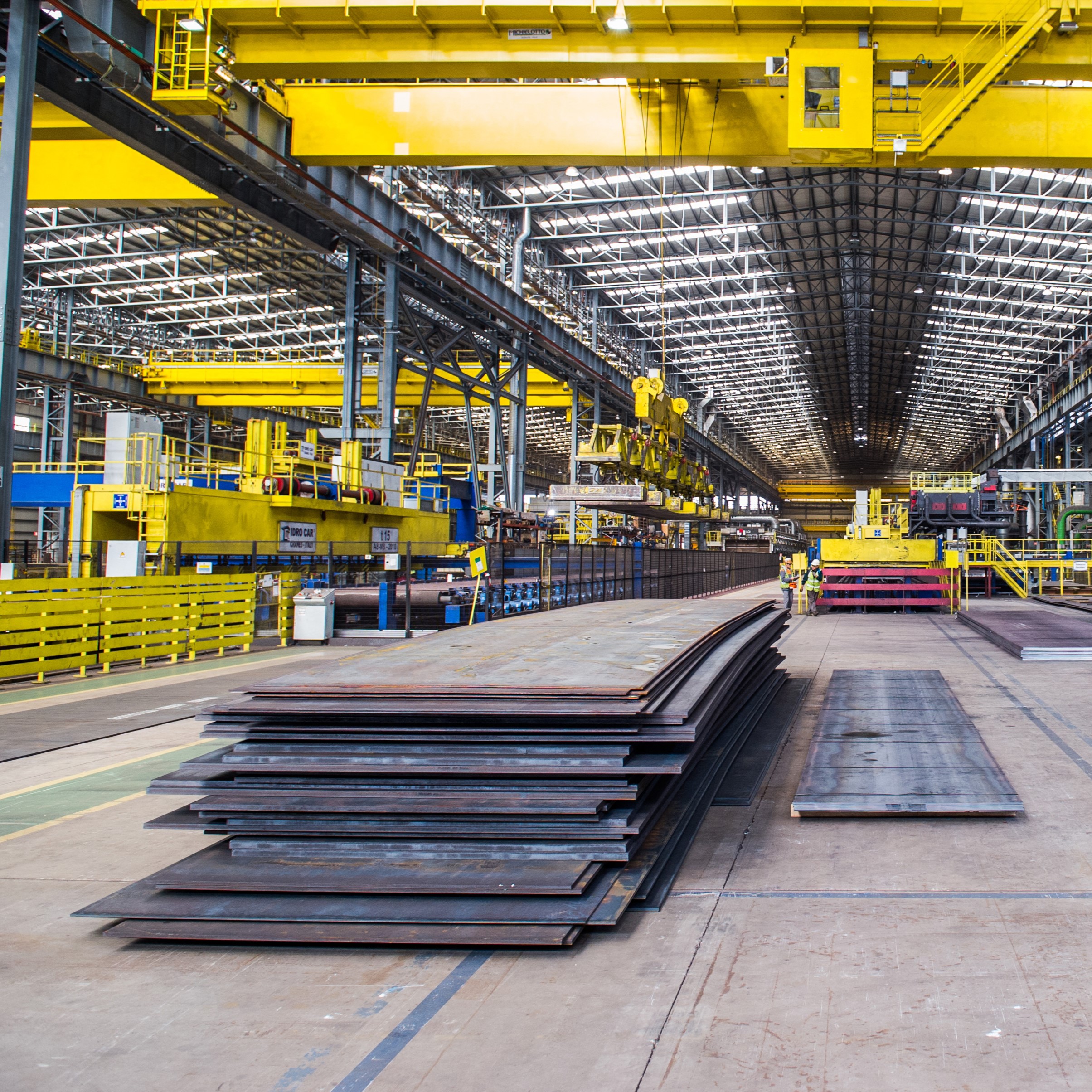ASTM A537/A537M C-Mn-Si Steel Plates for Pressure Vessel
ASTM A537/A537M C-Mn-Si steel plates are designed explicitly for pressure vessels and structural applications requiring superior strength and toughness. These plates, made from carbon-manganese-silicon alloy steel, undergo heat treatment processes such as normalization, quenching, and tempering to enhance their mechanical properties. They offer excellent tensile and yield strengths, making them ideal for high-pressure environments. Widely utilized in the petrochemical, oil and gas, power generation, and marine industries, ASTM A537/A537M plates provide reliable performance in demanding conditions. Their balanced chemical composition, including controlled carbon, manganese, silicon, and trace elements, ensures optimal durability and resistance to various stresses, ensuring the safety and integrity of pressure-containing structures.
Chemical Composition of ASTM A537/A537M C-Mn-Si Steel Plates for Pressure Vessel
| Element |
Composition (%) |
| Carbon (max) |
0.24 |
| Manganese |
– ≤ 1.5 in (≤ 40 mm) thickness: 0.70–1.35 |
| – > 1.5 in (> 40 mm) thickness: 1.00–1.60 |
| Phosphorus (max) |
0.035 |
| Sulfur (max) |
0.035 |
| Silicon |
0.15–0.50 |
| Copper (max) |
0.35 |
| Nickel (max) |
0.25 |
| Chromium (max) |
0.25 |
| Molybdenum (max) |
0.08 |
Mechanical Properties of ASTM A537/A537M C-Mn-Si Steel Plates for Pressure Vessel
| Class |
Heat Treatment |
Thickness (in) |
Tensile Strength (ksi [MPa]) |
Yield Strength (min, ksi [MPa]) |
Elongation (min, %) |
| 1 |
Normalized |
≤ 2.5 (≤ 65 mm) |
70–90 [485–620] |
50 [345] |
22 (2 in [50 mm]) |
| > 2.5 to 4 (> 65 to 100 mm) |
65–85 [450–585] |
45 [310] |
22 (2 in [50 mm]) |
| 2 |
Quenched & Tempered |
≤ 2.5 (≤ 65 mm) |
80–100 [550–690] |
60 [415] |
22 (2 in [50 mm]) |
| > 2.5 to 4 (> 65 to 100 mm) |
75–95 [515–655] |
55 [380] |
22 (2 in [50 mm]) |
| > 4 to 6 (> 100 to 150 mm) |
70–90 [485–620] |
46 [315] |
22 (2 in [50 mm]) |
| 3 |
Quenched & Tempered |
≤ 2.5 (≤ 65 mm) |
80–100 [550–690] |
55 [380] |
22 (2 in [50 mm]) |
| > 2.5 to 4 (> 65 to 100 mm) |
75–95 [515–655] |
50 [345] |
22 (2 in [50 mm]) |
| > 4 to 6 (> 100 to 150 mm) |
70–90 [485–620] |
40 [275] |
22 (2 in [50 mm]) |
Specifications
| Standard |
ASTM A537/A537M C-Mn-Si Steel Plates for Pressure Vessel |
| Steel Grade/Material |
Class 1, Class 2, Class 3 |
| Dimension |
T 5-350mm × W 900-4100mm × L 3000-25000mm |
| Packing |
Packed with steel-framed plywood pallets |
| Supply Conditions |
AR = as-rolled TM = thermo-mechanical controlled processing CR = controlled QT = quenched and tempered N = normalized |
| Place of Origin |
Made in China |
| MOQ |
50 Tons |
| Transportation |
Railway, By Sea |
Applications of ASTM A537/A537M C-Mn-Si Steel Plates for Pressure Vessel
High-Pressure Applications: These plates are essential for constructing pressure vessels that operate under high-pressure conditions due to their excellent mechanical properties.
Petrochemical Industry: Used in pressure vessels that store and process chemicals, ensuring safety and durability in corrosive and high-pressure environments.
Storage Tanks: These are employed in tanks to store crude oil, natural gas, and other hydrocarbons under high pressure.
Heat Exchangers: Suitable for heat exchangers that operate under high-pressure conditions, ensuring efficient thermal transfer and structural integrity.
Steam Boilers: Utilized in steam boilers where high-pressure steam is generated for power generation and industrial processes.
Pressure Piping: Used in high-pressure piping systems that transport steam, water, and other fluids within power plants.
Shipbuilding: Employed in constructing ships and marine vessels that require materials capable of withstanding high pressure and harsh environmental conditions.
Submarine Hulls: These are used in constructing submarine hulls, where the material must endure high pressure and the corrosive effects of seawater.
Structural Components: Applied in constructing bridges, buildings, and other structures requiring high strength and rigid materials to withstand dynamic loads and environmental stresses.
Autoclaves: Used in the manufacture of autoclaves, which are high-pressure chambers used for sterilization, material processing, and chemical reactions.
Reactors: Employed in reactors that require materials with excellent mechanical properties to handle high-pressure and high-temperature conditions.




